It has been said that you cannot go wrong buying the big 3 Singapore banks. Have they been good investments for you?
STI ETF
The best way to compare them is to compare versus the STI ETF. The STI exchange traded fund invests in a basket of Singapore blue chip stocks on Singapore’s main board. The largest constituents is of course Singtel and the 3 big banks.
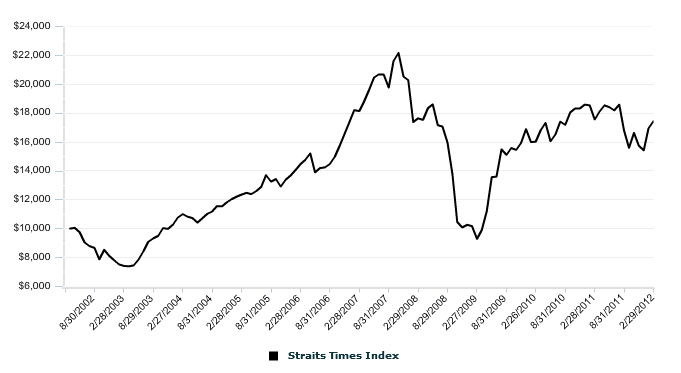
I wasn’t able to find a good chart of the STI etf, so I got this off the factsheet. Singapore did really well since the 2001 recession and you will not be disappointed with the returns.
(click to view larger chart)
I use my SGX Singapore Stocks Factsheet to calculate what would happen if a guy invests since 2001-2002 and what is his total returns is like [view my full spreadsheet here >>]
The total annualized return is 9%. Of the 121% returns 38% of the returns come from dividends.
The yield on cost started at 3% in 2003. After 9 years it climbed to 4.6% in 2011. Notice that at one point yield on cost was 7%! but the payouts got reduced as overall the underlying stocks paid out less.
DBS Bank
(click to view larger chart)
It would be great if you can offload DBS at a high of 25 bucks. you would have made 100% capital gains. The 2009 bear made a very compelling buy.
(click to view larger table)
The gains if you kept it is not much. But the dividends far outweighs the gains. A total return of 51% for an annualize 4.7% return. Half that of the STI. The dividends made up 77% of the gains.
DBS started off with a yield on cost of 3.2%. After 9 years its dividend yield climbed to 5% on an average.
UOB Bank
(click to view larger chart)
(click to view larger chart)
UOB bank turned in a better overall return of 94%. Annualized the return is roughly 6.8% over 10 years. Of the 94% returns, dividends make up 57% of the returns.
Dividend payouts are not very consistent initially. But your 3% yield on cost in 2002 would have become 4.5% in 2011. Not as much as OCBC.
Do note that UOB did issue 100 UOL shares for 1000 UOB shares owned in 2005. That makes a hell of an investment considering UOL is at 5 bucks ++ now
OCBC Bank
(click to view a larger image)
Do not be spook by the large drop. that is due to a 2 for 1 stock split.
(click to view larger image)
OCBC turned out to be the best performer of the lot. a total return of 121% gain matches close to the STI ETF
Annualized gain is 9.2%. Of the 121% gain, dividend made up 45% of the gain.
Notice that the dividend payouts have been slowly rising. Recent trends have show that payouts are far more consistent. Your 1.6% yield on cost turns to 5.6% after 9 years.
Conclusion
Is there a compelling reason to invest in Singapore banks? From the looks of it, Since STI ETF largely comprises of the 3 banks it would have been a better investment. You don’t know which one of them will turned out to be the winner so why not just buy all of them. You get a boost from the smaller stocks as well.
The volatility over the years have been big as well. For a risk adverse investor you would say the banks will always be around, but I do find STI ETF to be more compelling.
One thing to note is that dividend make up a significant portion of the returns. When investing for the long haul do take that into consideration.
What say you? Am I missing out something the banks have over an ETF?
To get started with dividend investing, start by bookmarking my Dividend Stock Tracker which shows the prevailing yields of blue chip dividend stocks, utilities, REITs updated nightly.
Make use of the free Stock Portfolio Tracker to track your dividend stock by transactions to show your total returns.
For my best articles on investing, growing money check out the resources section.
- My Dividend Experience Investing in UCITS iShares iBond Maturing in 2028. - April 23, 2024
- We Invest into Popular Funds When They Are Popular, Exactly When They Started Turning to Shxt. - April 22, 2024
- Meal Prep 2.0 – Cooking Your “Go-to” Meal that You Look Forward to Eating Everyday. - April 21, 2024

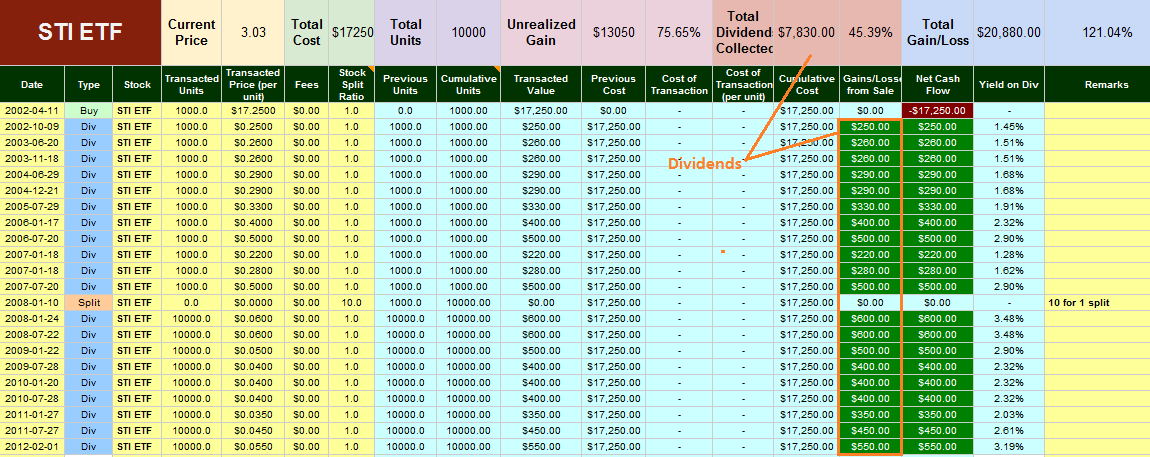
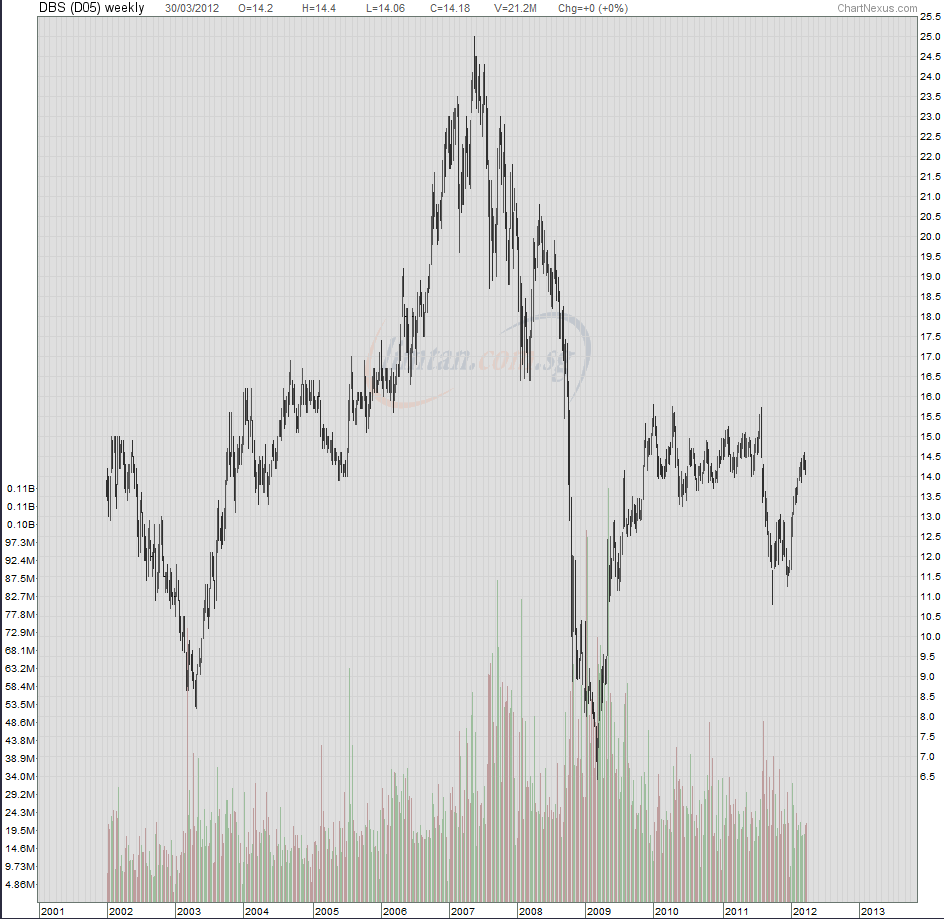


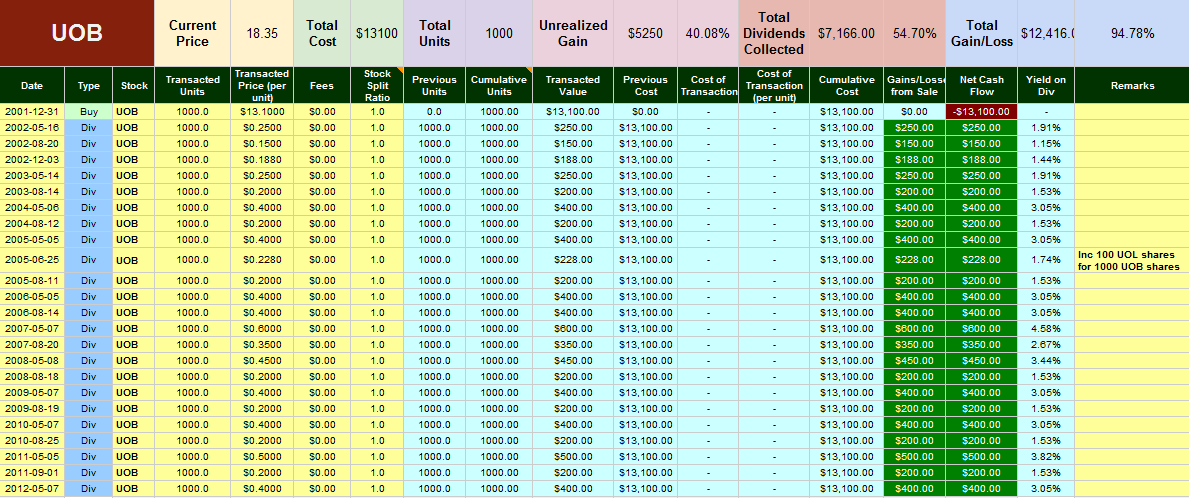
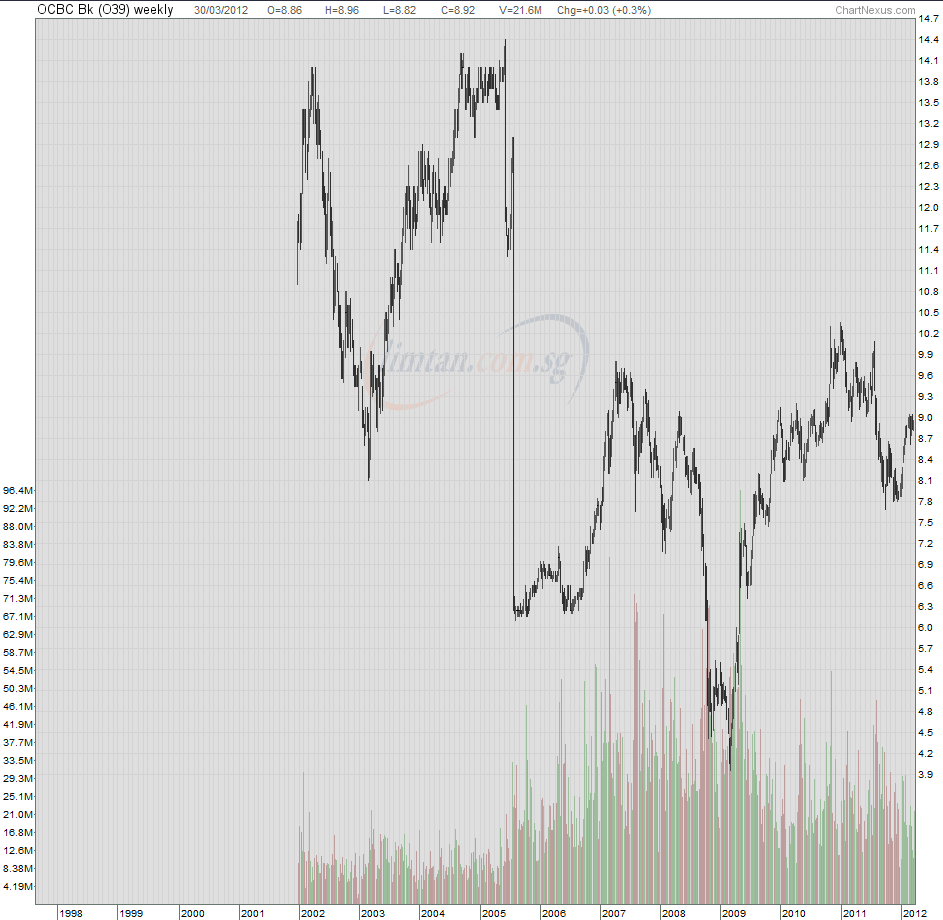
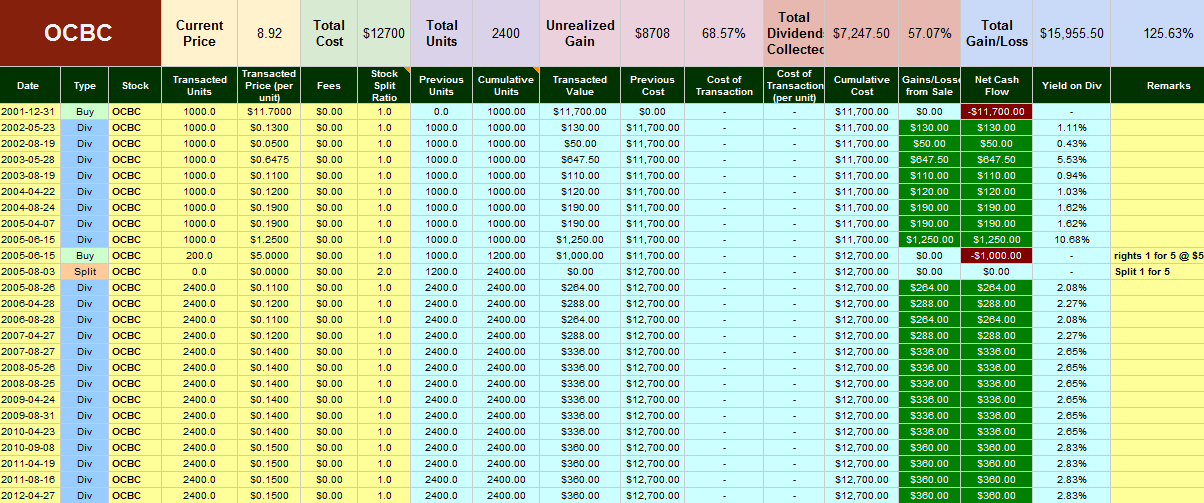
Yvette
Sunday 28th of October 2012
Hi Drizzt. I'm a newbie to STI ETF. Some qn. Are there many kinds of STI ETF to choose from ? Which one is better at tracking the STI index ? Is this STI ETF close or open ie must there be ready buyers or sellers before I can trade ? How liquid is STI ETF ?
Drizzt
Sunday 28th of October 2012
hi Yvette, if i am correct there are two STI etfs around.STI ETF, nikko am Singapore ETF, but i did not research the tracking error. The Nikko one is pretty valid because people can purchase in 100 share lots and if you use no minimum commission in SCB than you can slowly accumulate.
I am not sure about the liquidity but STI ETF is amongst if not the most liquid singapore listed ETF.
Serendib
Tuesday 3rd of April 2012
I've been a fan of the streetTracks STI ETF for many years. Nowadays there's enough liquidity for the counter too, so it tracks the STI pretty closely. Expense ratio of only 0.3% - not as low as the US ETFs, but much lower than any local unit trusts.
Ray168
Tuesday 3rd of April 2012
HiDrizzt,
The STI Index Y-axis value is wrong.
Drizzt
Tuesday 3rd of April 2012
hi Ray168, thats because i cannot find another better chart haha.
Cho
Monday 2nd of April 2012
Hi Drizzt, How did you calculate the annualized returns?
Drizzt
Monday 2nd of April 2012
hi Cho, if the total returns is 121% over 9 years its 2.21^(1/9)
Temperament
Monday 2nd of April 2012
Hi Dritzz, Do we have to take STI ETF's annual management fees into account?